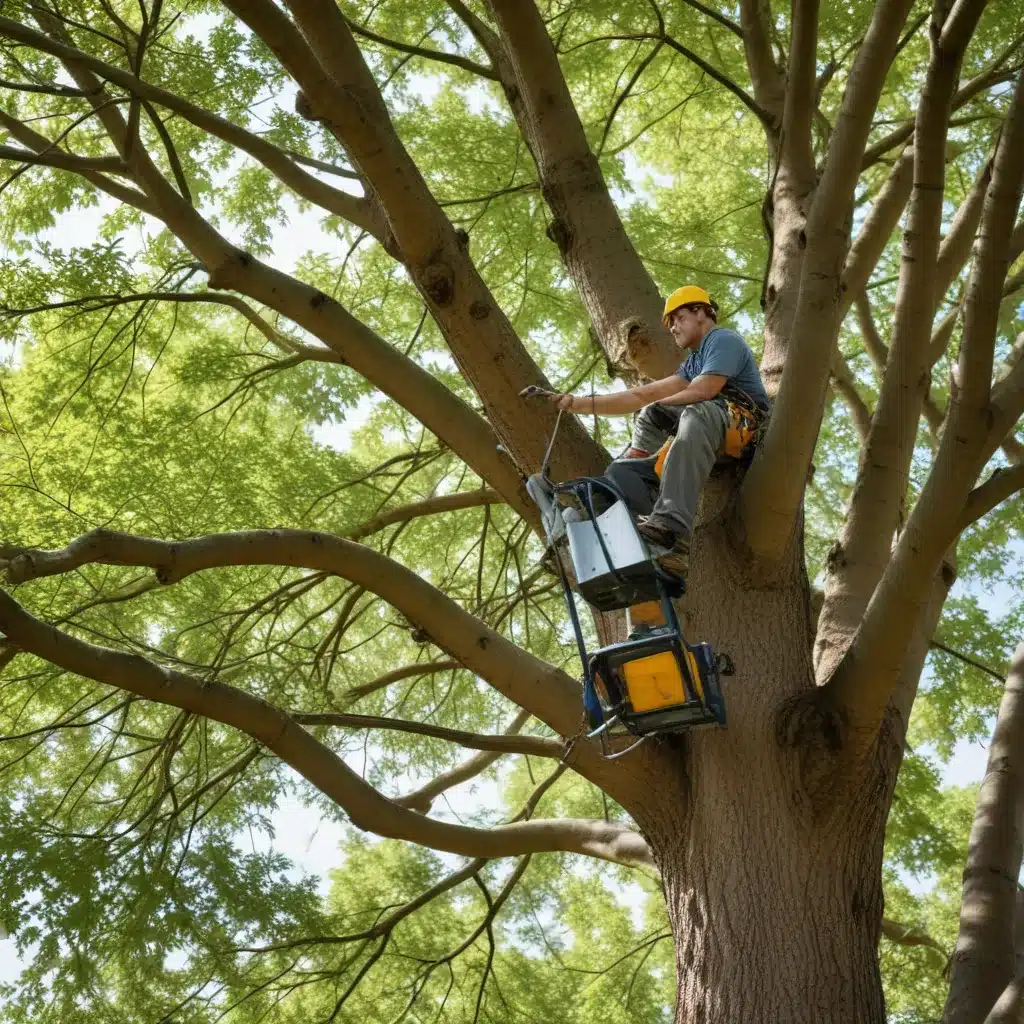
As a tree care specialist at TriCounty Tree Care, I’m here to share essential insights into the seasonal rhythms of tree maintenance. Navigating the unique challenges presented by each time of year is crucial for ensuring the long-term health and vigor of your trees. By adopting a proactive, holistic approach, you can foster optimal growth and safeguard the ecological benefits your trees provide.
Seasonal Considerations
Spring Preparation
As the harsh winter gives way to the promise of spring, it’s time to assess your trees and set the stage for a thriving growing season. Dormancy-breaking is a critical process during this transitional period, as it signals the tree’s metabolic shift from a state of rest to active growth. Performing essential health checks, such as inspecting for winter damage, pruning dead or damaged limbs, and addressing any nutrient deficiencies in the soil, can provide your trees with the resources they need to recover and flourish.
Summer Care
The summer months can be as demanding on trees as the frigid winters, requiring vigilant attention to hydration and protection against environmental stressors. Proper watering techniques, such as deep, infrequent irrigation, can help maintain soil moisture and prevent drought stress. Shielding trees from direct sunlight during periods of intense heat can also mitigate the risk of heat-related damage. Proactive pest and disease management, utilizing integrated pest management (IPM) strategies, is essential for preserving the overall health and vigor of your trees.
Autumn Priorities
As the growing season winds down, autumn presents an opportune time to prepare your trees for the winter ahead. Mulching the root zone can help insulate and retain moisture, while also suppressing weed growth. Evaluating the overall condition of your trees and addressing any issues, such as structural weaknesses or soil compaction, can set the stage for a successful transition into dormancy. Enlisting the expertise of an ISA-certified arborist for a comprehensive assessment can uncover potential problems and inform a tailored care plan for the coming year.
Pruning Techniques
Proper pruning is a fundamental aspect of tree maintenance, as it promotes healthy growth, enhances structural integrity, and mitigates the spread of pests and diseases. The key is to employ proper pruning methods, such as the 3-cut technique, and time the pruning activity to coincide with the tree’s dormant period, typically during the winter months. This approach minimizes stress on the tree and encourages the desired growth patterns in the spring and summer.
Pruning also requires an understanding of tree biology and the potential hazards associated with the task. Identifying branch attachment points, understanding branch collar function, and being mindful of pruning cuts can help prevent inadvertent damage and promote faster healing. Prioritizing safety by using the appropriate equipment and following established arboricultural practices is essential for both the health of the tree and the well-being of the operator.
Soil and Nutrient Management
Healthy soil is the foundation for robust tree growth and resilience. Conducting a comprehensive soil analysis can provide valuable insights into the nutrient composition, pH levels, and overall quality of the growing medium. Armed with this information, you can develop a tailored fertilization strategy to address any deficiencies and ensure your trees receive the necessary nutrients for optimal performance.
Proper irrigation practices are also crucial, as they help maintain soil moisture and support the tree’s root system. Adjusting watering schedules based on seasonal variations and environmental factors, such as rainfall and temperature, can help prevent both waterlogging and drought stress.
Disease and Pest Control
Trees face a myriad of potential threats, from fungal diseases to insect infestations. Proactively identifying and addressing these issues can mean the difference between a thriving, long-lived tree and one that succumbs to decline. Familiarizing yourself with common tree diseases and pest species in your region, as well as implementing IPM strategies, can help you stay ahead of potential problems.
IPM approaches combine various control methods, including cultural practices, biological controls, and selective use of pesticides, to manage pests and diseases in an environmentally responsible manner. By monitoring your trees regularly and acting swiftly at the first signs of trouble, you can mitigate the spread of harmful organisms and safeguard the overall health of your urban forest.
Optimal Growth Factors
Environmental Factors
The key to fostering optimal tree growth lies in understanding and addressing the unique environmental factors at play. Ensuring adequate sunlight exposure, accounting for microclimate variations, and ensuring proper drainage are all crucial considerations. By tailoring your tree selection and care practices to the specific conditions of your site, you can create an environment that supports the long-term vitality of your trees.
Tree Biology
Delving into the biological mechanisms that drive tree growth and development can provide valuable insights for effective maintenance. Appreciating the intricacies of root system architecture, canopy structure, and the seasonal growth cycles of trees empowers you to anticipate their needs and respond accordingly. This deep understanding can inform your pruning strategies, irrigation regimes, and overall care approach, leading to healthier, more resilient trees.
Proactive Maintenance
Rather than reactively addressing issues as they arise, a proactive approach to tree care can yield far-reaching benefits. Implementing preventative measures, such as routine monitoring, early intervention, and long-term planning, can help you stay ahead of potential problems and nurture your trees’ health and longevity. Partnering with a trusted, ISA-certified arborist can further enhance your tree care efforts, as they bring specialized expertise and a comprehensive understanding of your local ecosystem.
By embracing a holistic, season-tailored approach to tree maintenance, you can foster a thriving, resilient urban forest that not only beautifies your property but also contributes to the overall ecological health of your community. For all your tree care needs, trust the experts at TriCounty Tree Care to provide the expertise and guidance you need to achieve optimal growth and long-term sustainability.


